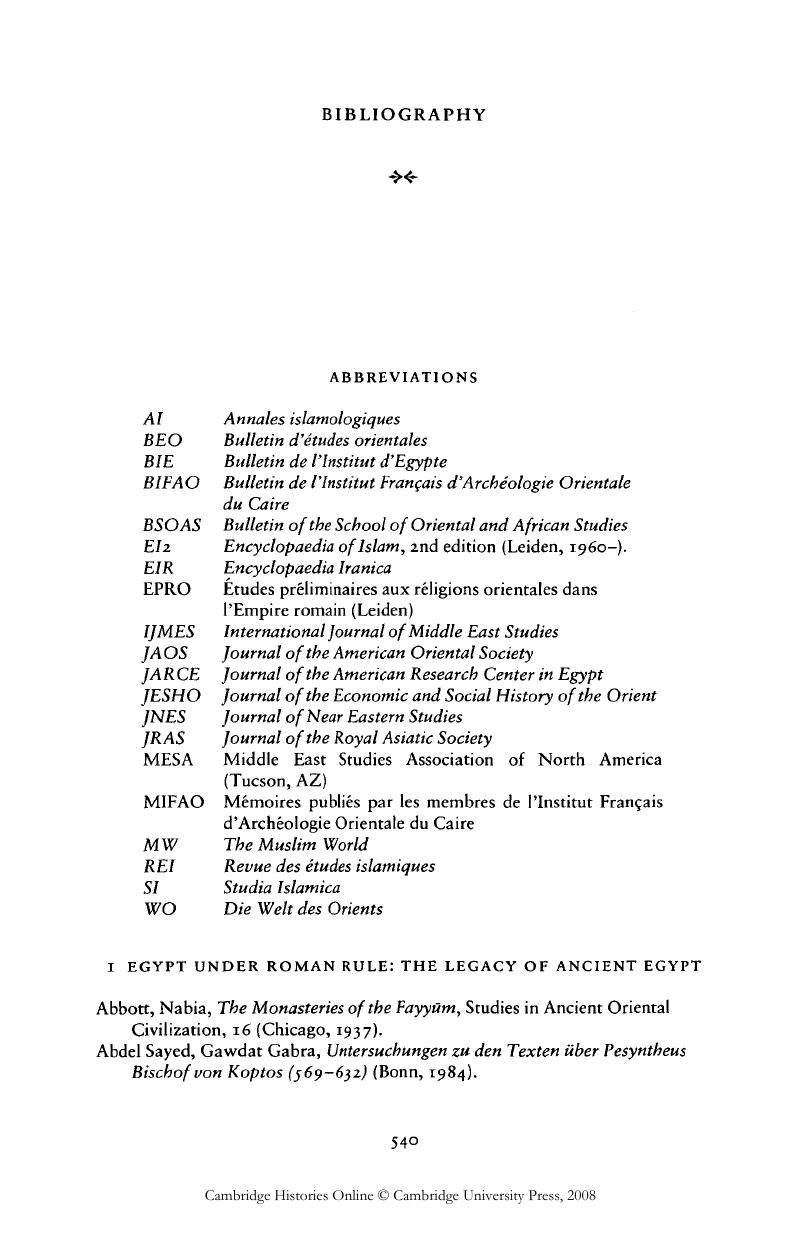Book contents
- Frontmatter
- 1 Egypt under Roman rule: the legacy of ancient Egypt
- 2 Egypt on the eve of the Muslim conquest
- 3 Egypt as a province in the Islamic caliphate, 641–868
- 4 Autonomous Egypt from Ibn Tūlūn to Kāfūr, 868–969
- 5 The Ismā‘īlī Da‘wa and the Fātimid caliphate
- 6 The Fātimid state, 969–1171
- 7 The non-Muslim communities: Christian communities
- 8 The non-Muslim communities: the Jewish community
- 9 The crusader era and the Ayyūbid dynasty
- 10 The Bahrī Mamlūk sultanate, 1250–1390
- 11 The regime of the Circassian Mamlūks
- 12 The monetary history of Egypt, 642–1517
- 13 Art and architecture in the medieval period
- 14 Culture and society during the late Middle Ages
- 15 Historiography of the Ayyūbid and Mamlūk epochs
- 16 Egypt in the world system of the later Middle Ages
- 17 The military institution and innovation in the late Mamlūk period
- 18 The Ottoman occupation
- The Rulers of Egypt, 254–922/868–1517
- Glossary
- Bibliography
- Index
- References
Bibliography
Published online by Cambridge University Press: 28 March 2008
- Frontmatter
- 1 Egypt under Roman rule: the legacy of ancient Egypt
- 2 Egypt on the eve of the Muslim conquest
- 3 Egypt as a province in the Islamic caliphate, 641–868
- 4 Autonomous Egypt from Ibn Tūlūn to Kāfūr, 868–969
- 5 The Ismā‘īlī Da‘wa and the Fātimid caliphate
- 6 The Fātimid state, 969–1171
- 7 The non-Muslim communities: Christian communities
- 8 The non-Muslim communities: the Jewish community
- 9 The crusader era and the Ayyūbid dynasty
- 10 The Bahrī Mamlūk sultanate, 1250–1390
- 11 The regime of the Circassian Mamlūks
- 12 The monetary history of Egypt, 642–1517
- 13 Art and architecture in the medieval period
- 14 Culture and society during the late Middle Ages
- 15 Historiography of the Ayyūbid and Mamlūk epochs
- 16 Egypt in the world system of the later Middle Ages
- 17 The military institution and innovation in the late Mamlūk period
- 18 The Ottoman occupation
- The Rulers of Egypt, 254–922/868–1517
- Glossary
- Bibliography
- Index
- References
Summary

- Type
- Chapter
- Information
- The Cambridge History of Egypt , pp. 540 - 618Publisher: Cambridge University PressPrint publication year: 1998

